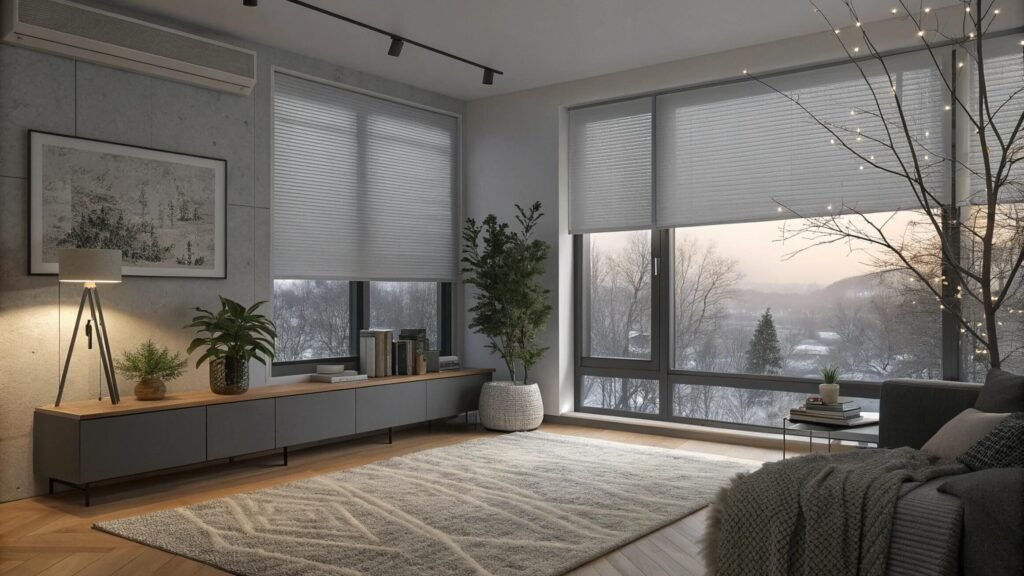You see your heating bills climb every winter and can't help but feel like you're paying to heat the outdoors. Much of that expensive warmth is escaping directly through your windows, but you're unsure if blinds can actually make a meaningful difference.
The right insulating blinds1 definitely work, with some types proven to reduce winter heat loss by up to 40%. Honeycomb cellular blinds are the top performers due to their air-trapping design2. However, the real key is combining the right product with the right habits—using them correctly can double their impact.
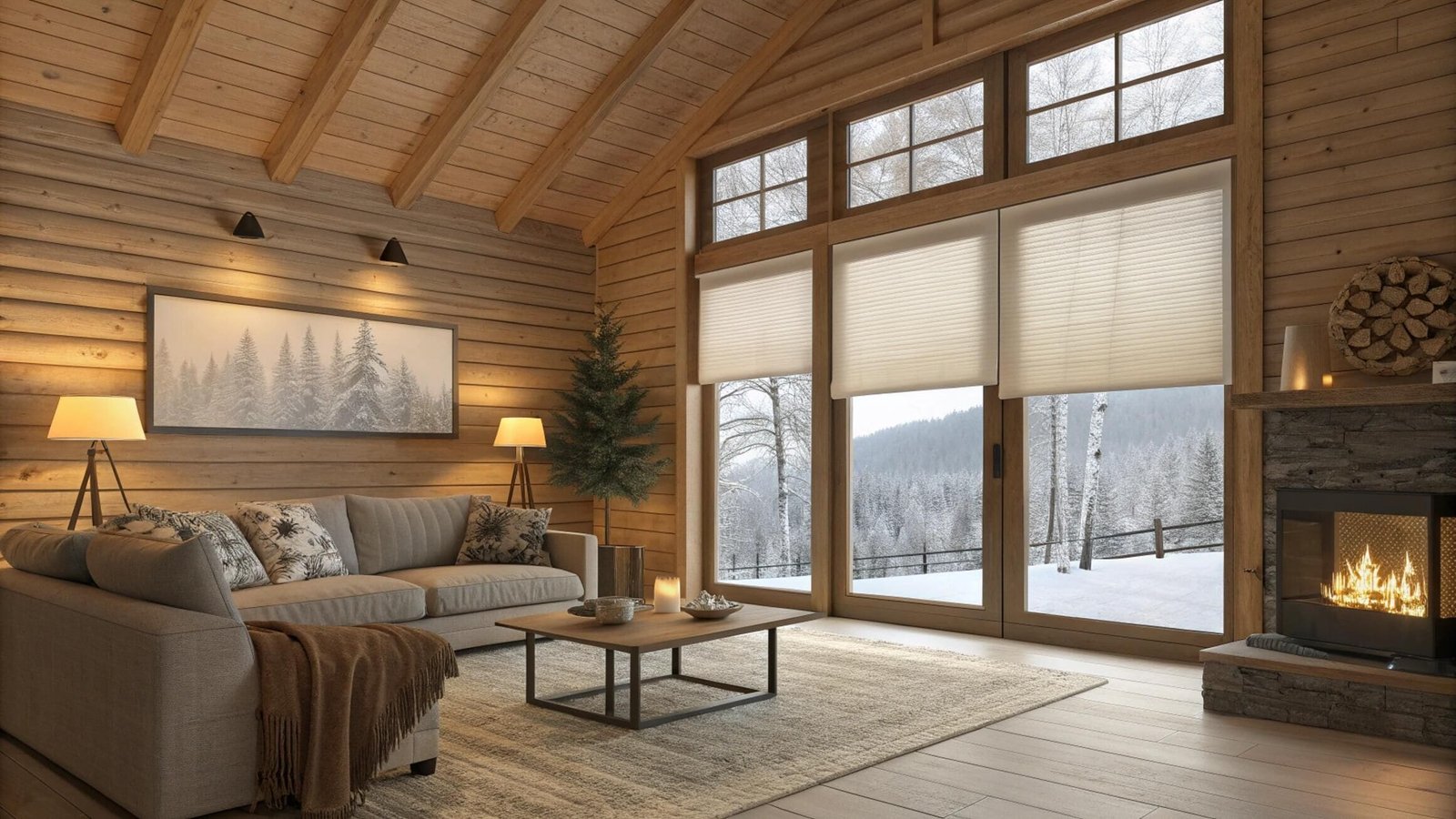
Explore our full range of 👉 Honeycomb Blinds
I've advised so many clients who invested in high-quality insulating blinds but were disappointed with the results. The problem wasn't the product; it was how they used it. They would leave the blinds open all day and night, negating their insulating power3. Most people focus only on the material, but your daily habits often make a bigger difference in real-world energy savings. Let's break down both the science and the strategy.
What Blinds Are Most Insulating?
You're ready to invest in better insulation, but you need to know which type of blind gives you the most effective barrier against the cold. You want a product specifically engineered for heat retention4.
Honeycomb cellular shades are the most insulating blinds you can buy. Their unique air-pocket structure is designed specifically to trap air and reduce thermal transfer. Following closely are roller shades with a dedicated thermal backing and custom Roman shades made with a thick interlining.
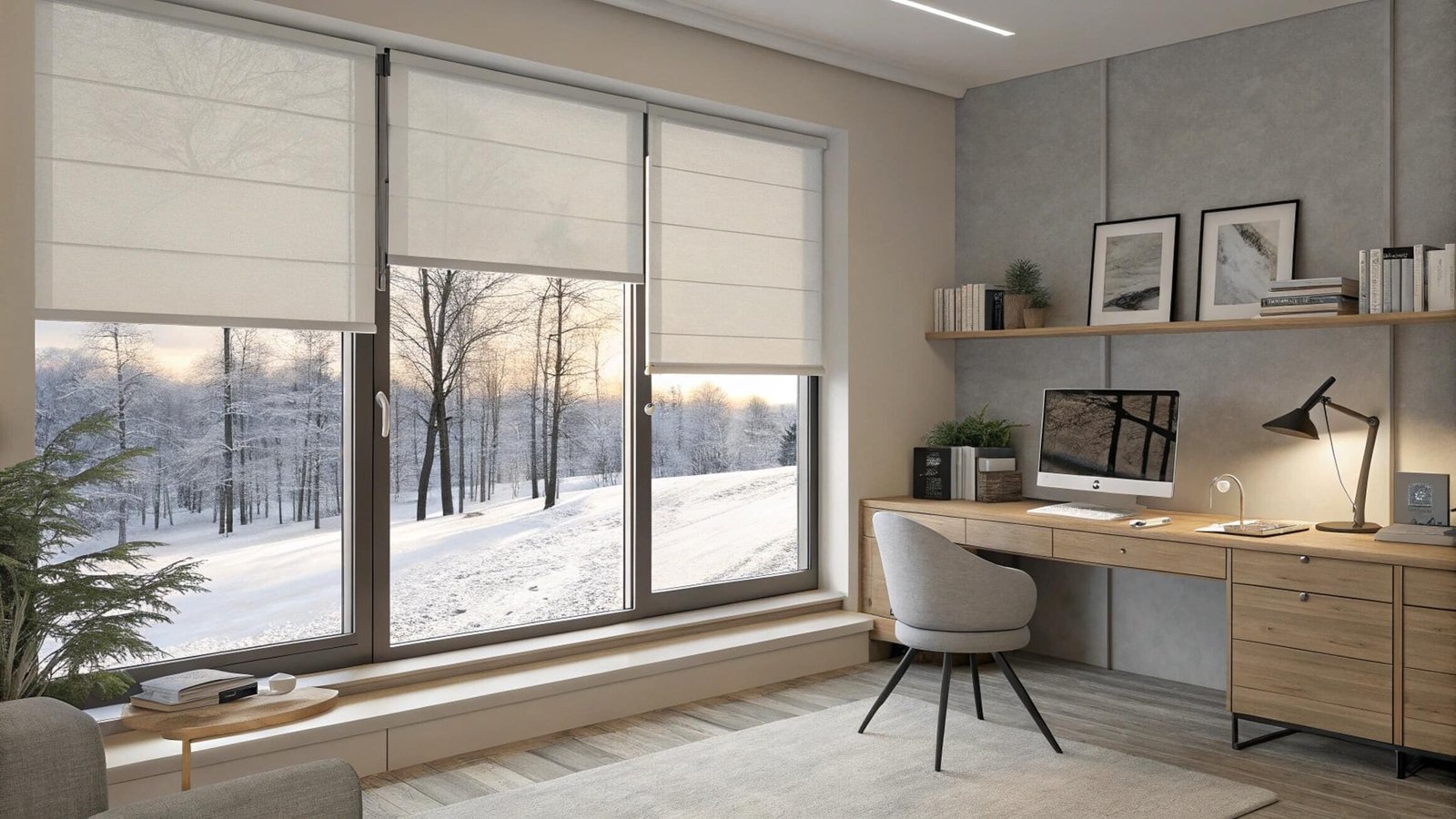
Explore our full range of 👉 Roman Shades
When we talk about insulation, we're talking about stopping the movement of heat. Here’s how the top performers achieve this:
- Honeycomb (Cellular) Blinds: These are the champions of insulation. Their structure is composed of fabric cells that trap a layer of air, creating a buffer between the cold window surface and your room. This design is incredibly effective at reducing heat loss in winter. Double-cell versions trap even more air, providing the highest level of insulation.
- Thermal Roller Blinds: These look like standard roller blinds from the front, but they have a special thermal coating on the back. This backing is designed to reflect heat. In fact, studies show that a properly installed roller blind with a thermal backing can slash heat loss by as much as 40%.
- Lined Roman Shades5: A classic Roman shade can become a powerful insulator when it's constructed with a middle layer of thick fabric (an interlining) and a backing. This multi-layer sandwich works much like a heavy blanket, slowing down heat transfer effectively.
What Is the Difference Between Thermal and Blackout Blinds?
You see the terms "blackout" and "thermal" used interchangeably and you're worried you'll buy one thinking it does the job of the other. You need to know if blocking light is the same as blocking cold.
While they can overlap, their primary jobs are different. Blackout blinds are designed to block light, which is their only guaranteed function. Thermal blinds are specifically designed to reduce heat transfer. A good thermal blind is often also a blackout blind, but a blackout blind is not always thermal.
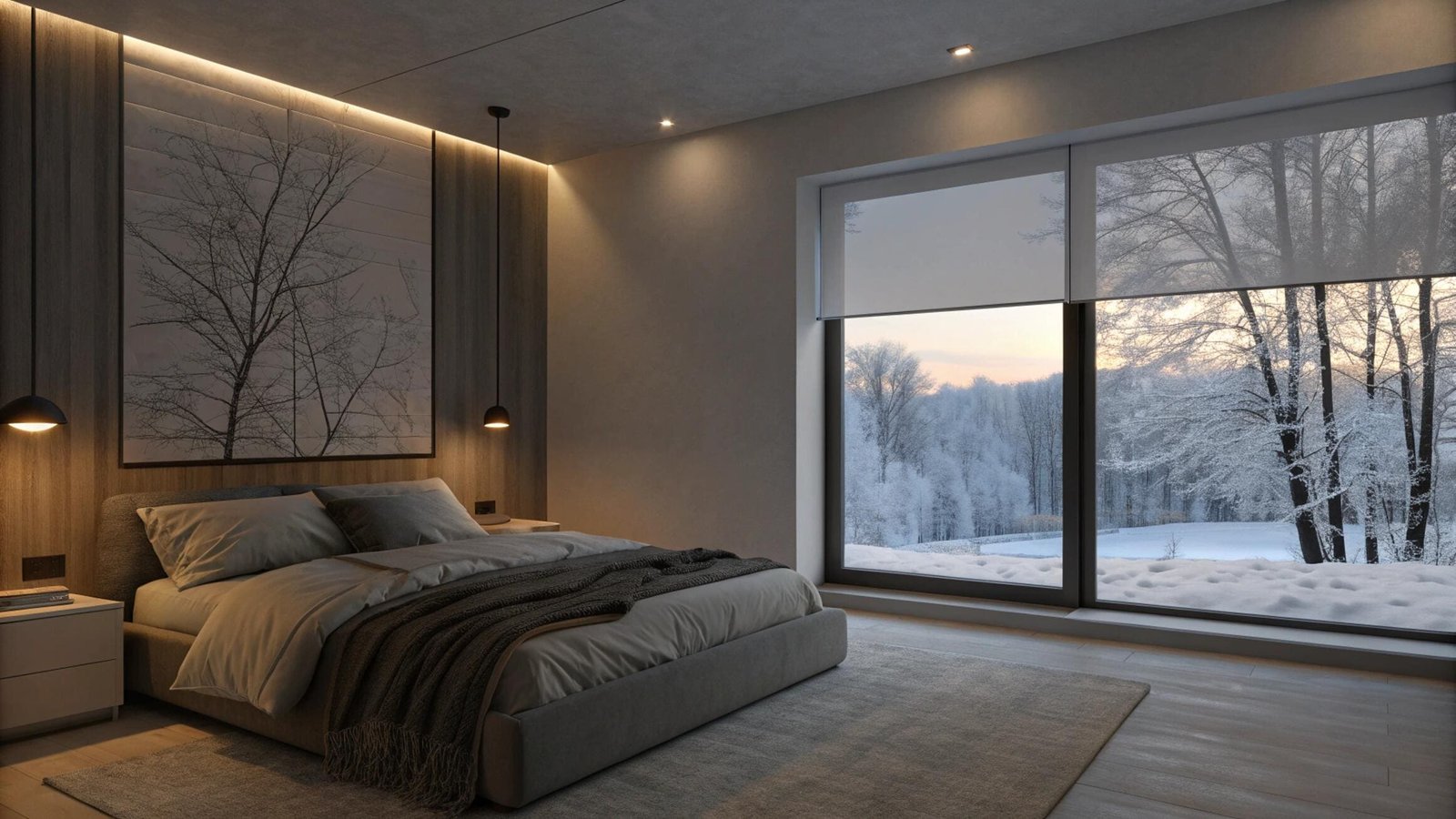
Explore our full range of 👉 Roller Shades
I always clarify this distinction for my clients to manage expectations.
- Blackout: The goal of a blackout fabric is to be completely opaque. The material is woven or coated to prevent any light from passing through. While this dense material can incidentally provide some minor insulation, that's not its main purpose. If your goal is simply a dark room for sleeping, blackout is what you need.
- Thermal: The goal of a thermal blind is to provide insulation. This is achieved through specific design features. In honeycomb blinds, it’s the air-trapping cellular structure. In roller blinds, it's often a metallized or foam-coated backing designed to reflect heat. These features are engineered to keep heat in during the winter and out during the summer.
For winter heat retention4, you must prioritize the "thermal" feature.
What Insulates Better for Winter, Curtains or Blinds?
You're trying to make the most cost-effective decision for winter energy savings and you're stuck between traditional curtains and modern blinds. Which one will give you a better return on your investment?
While heavy, layered curtains can provide good insulation, purpose-built insulating blinds like honeycomb shades generally offer superior and more reliable performance. Their engineered design is specifically optimized to create a sealed air gap right against the window pane.
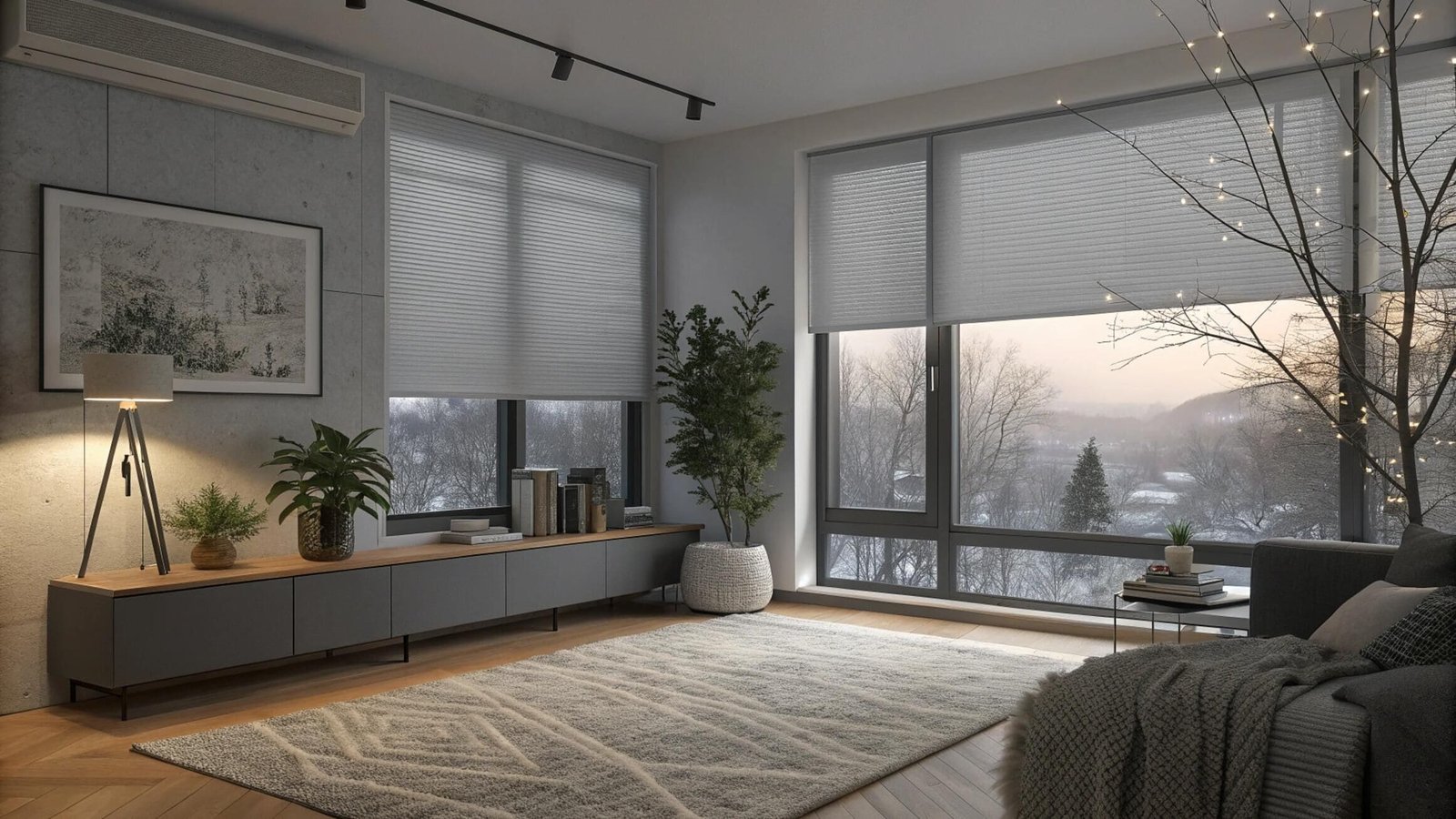
This is a classic debate, but the science supports engineered solutions.
- Curtains: The effectiveness of curtains varies wildly. To be a good insulator, a curtain needs to be very heavy, made of a thick fabric, and ideally have a separate thermal liner. It must also be wide enough to overlap the window frame and long enough to reach the floor or windowsill to stop air movement. If not, cold air will just flow around it.
- Insulating Blinds: Engineered blinds are more efficient. A honeycomb blind traps air in a contained, structured way, providing consistent insulation across the entire window. A roller blind with thermal backing, when installed inside the window frame, creates a very effective seal. For maximum performance, adding side channels can virtually eliminate all air gaps around the edges of a roller blind.
For guaranteed performance based on tested data, insulating blinds are the more reliable choice.
How Should You Use Blinds in Winter for Maximum Heat Retention?
You’ve invested in insulating blinds, but you want to make sure you're getting every bit of energy-saving potential out of them. It's frustrating to spend money on a feature and not use it correctly.
Your daily habits are just as important as the blinds themselves. The core strategy is simple: close your blinds at dusk to trap the day's warmth and keep them tightly closed on cloudy days. On sunny winter days, open them wide to let in free solar heat6.

This is the behavioral part that makes a huge difference. Think of your blinds as a dynamic tool, not a static decoration.
- Should blinds be up or down? They should be down and closed whenever you are losing more heat than you are gaining. This means at night, on overcast days, and for any windows that aren't getting direct sun. My clients who use smart blinds7 programmed to an automated schedule see the best results, as it takes the guesswork out.
- Which way should slats be tilted? For horizontal (Venetian) blinds, tilt the slats so the curved edge faces upwards. This creates a better seal between slats, preventing warm air from escaping and directing cold air from the window back towards the glass.
- Why keep them closed? Keeping blinds closed creates that crucial insulating air gap. This is the action that allows the blind to perform its function—without it, you get almost no insulating benefit. It's why tests show roller blinds can reduce heat loss by up to 40%; those tests assume the blind is closed.
Conclusion
The best strategy for winter is a two-part approach. First, choose a product engineered for the job, like honeycomb or thermal blinds8. Second, use it intelligently—close it to trap heat and open it to capture free solar warmth. This combination is the key to maximizing comfort and minimizing energy costs.
Partner with VelaBlinds for Your Next Project
Smart window treatments shouldn't be complicated. After working with 500+ distributors and contractors worldwide, I've streamlined the process to get you quality products, competitive pricing, and reliable support - every time.
Why project professionals choose VelaBlinds:
- ✅ Fast, Accurate Quotes - Detailed specs and pricing within 24 hours
- ✅ Transparent Pricing - No hidden fees, volume discounts clearly outlined
- ✅ Quality Assurance - Direct partnerships with certified OEM manufacturers
- ✅ Project Support - Dedicated account manager from quote to delivery
Start your next project:
📧 Quick Quote: Send your requirements to info@velablinds.com
📱 Direct Contact: WhatsApp +86 137 2012 8317
🌐 Browse Solutions: https://velablinds.com/
📁 Product Resources: Access spec sheets, catalogs & project files
Paul Chen, Founder
"I built VelaBlinds to solve the real challenges I faced as a project buyer - long lead times, unclear specs, and unreliable suppliers. Let's discuss how we can power your projects with smarter blinds."
Serving distributors and contractors across North America, Europe, and Australia since 2018.
-
Explore how insulating blinds can significantly reduce your heating costs and improve energy efficiency. ↩
-
Understand the science behind air-trapping designs in blinds and their insulation benefits. ↩
-
Learn tips and tricks to enhance the insulating power of your blinds for better energy savings. ↩
-
Discover strategies to enhance heat retention in your home for better comfort and savings. ↩ ↩
-
Find out how lined Roman shades can provide excellent insulation with their multi-layer design. ↩
-
Learn how to effectively use blinds to harness free solar heat during winter days. ↩
-
Find out how smart blinds can automate your window treatments for optimal energy savings. ↩
-
Explore the specific design features that make thermal blinds a great choice for winter insulation. ↩

